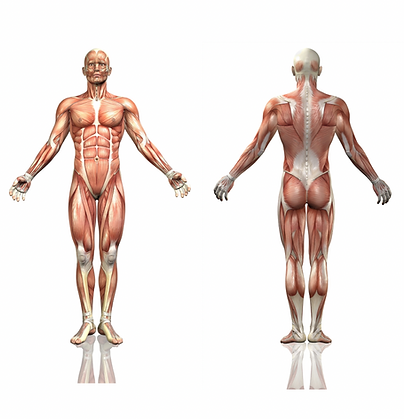
Fascia Release Reflexology
Fascia release is an advanced and effective reflexology technique that is applied to the lower legs and feet to release a tight, adhesive, miscommunicating non-gliding fascial system.
The key connections between the fascia, the feet, and hands are the myofascial meridians. These meridians run from head to toe and the hands.
Releasing fascial tension in the feet affects the feet and arches, ankles and calves, knees, hamstrings, hips, pelvic floor, core, spine, and neck. The sensory impact is posture control and calming of the nervous system (parasympathetic activation).
Releasing fascial tension on the hands affects the hands, wrists, forearms, elbows, biceps, triceps, shoulders, chest, upper back, neck, jaw, head, diaphragm, and breathing. The sensory impact is on the nervous system, sending signals to the brain and spinal cord, which improves proprioception, downregulates muscle tone, and activates the parasympathetic nervous system.
Fascia can become damaged due to stored emotional trauma, physical trauma (surgery), injury, inflammation (fasciitis), overuse (RSI), stress, poor posture, sedentary lifestyle, puberty, menopause, and dehydration. For example, spinal surgery causes scarring and tightness, which can lead to spinal misalignment and increased strain on joints and ligaments.
Damaged fascia becomes tight, adhesive, brittle, and it stops gliding, causing a variety of symptoms such as plantar fasciitis, stiffness, reduced range of motion, and chronic pain. Damage to superficial fascia can present as skin sensitivity.

What is Fascia?
The fascial system is a highly communicative structure, and it is the body's largest organ. Fascia is a thin, web-like structure of connective tissue that weaves throughout the body. It influences every system in the body.
A healthy, gliding fascia is cellular health, and it begins with the mitochondria, which are the energy factories inside every cell in the body.
Years of clinical research have uncovered the three key elements of fascia: collagen, elastin, and hyaluronic acid. Without these elements, fascia becomes sticky, brittle, and inflamed, leading to pain, aging, dysfunction, stagnation, and disease.
Fascia holds tension as well as emotions, trauma, and energy, as well as anything you may have suppressed in your lifetime.

Why Does Fascia Matter?
The fascial system provides an environment that enables all body systems to work integratively.
-
Communication throughout the body
-
Structural support and stabiliser
-
Flexibility and movement; gliding of the musculoskeletal system
-
Shock absorption; e.g., plantar fascia
-
Blood flow relies on flexible fascia
-
Lymphatic drainage relies on fascia and muscle movement.
-
Metabolic support
-
Endocrine function: transmits hormones around the body
-
Healing and repair
-
Proprioception (a sense that lets us perceive the location and movement of our body parts)
-
Myofascial force transmission
-
Compartmentalises organs

What is a Fascia Release Treatment Like?
The fascia of the hands, feet, and lower legs is released first while the patient is encouraged to breathe deeply through the nose and exhale through the nose. There may be some discomfort during this.
A whole-body resonance technique is applied as the therapist uses small, gentle impulses while holding onto the patient's feet. This gives the therapist insight into how taught the fascia is.
The main adhesion lines, myofascial spirals, and diaphragms are all worked to release the fascial system. The fascial attachments to the liver, heart, and spleen are also worked.
